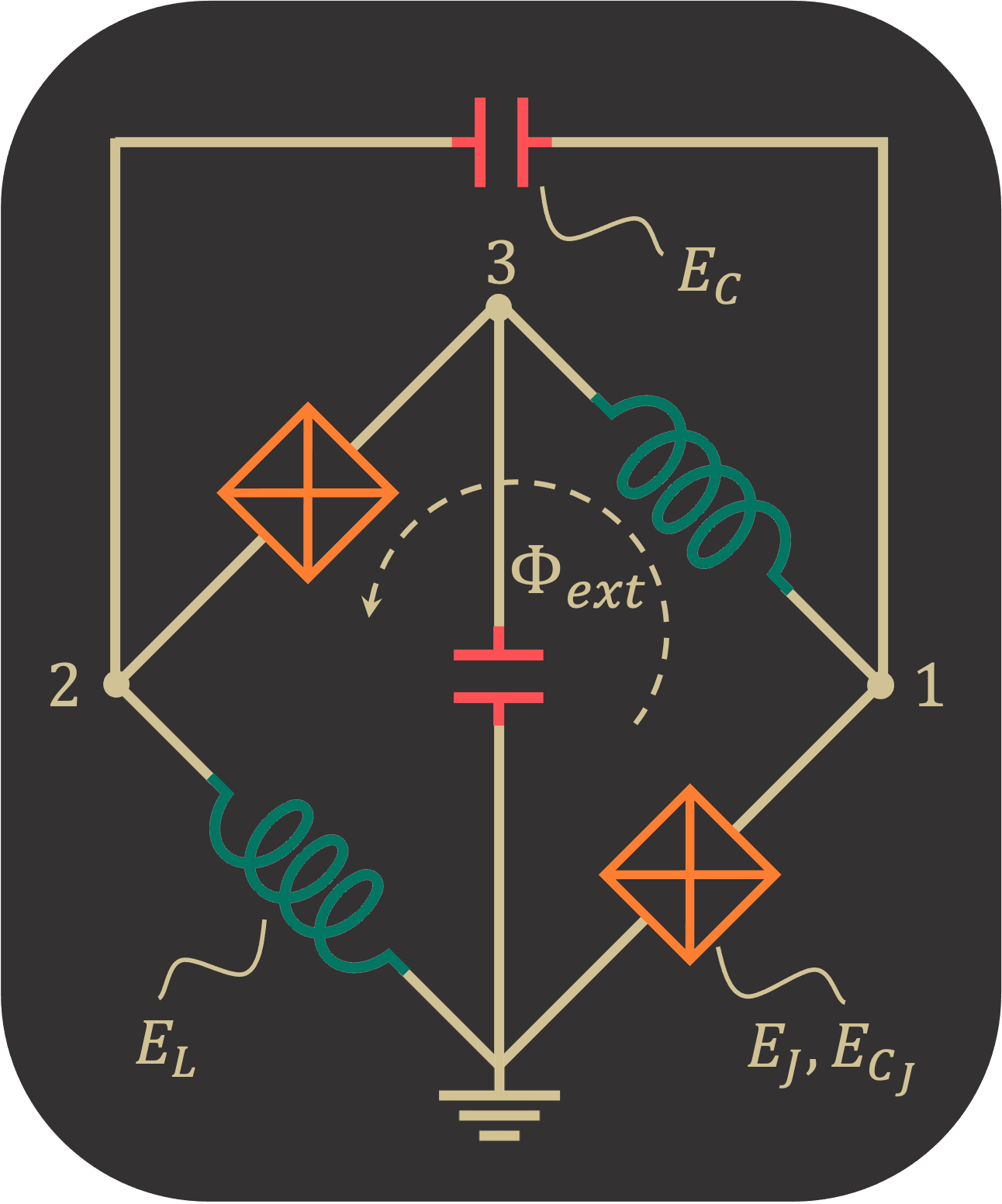Quick Tutorial
To show a quick overview of how to use SQcircuit, we find the qubit frequency for the symmetric zero-pi qubit with the following parameters in gigahertz: \(E_C=0.15\), \(E_{CJ}=10\), \(E_L=0.13\) , and \(E_J=5\).
After installing the SQcircuit, we import it via:
# import the SQcircuit library
import SQcircuit as sq
Since zero-pi qubit has a single inductive loop, we define its loop by creating a loop object from Loop class with flux bias at frustration point:
# inductive loop of zero-pi qubit with flux bias at its frustration point.
loop1 = sq.Loop(value=0.5)
We can later change the value of the flux bias by set_flux() method. Each circuit component in SQcircuit has their
own class definition Capacitor class for capacitors, Inductor class for inductors, and Junction class for
Josephson junctions. We define the elements of our zero-pi circuit as following:
# capacitors
C = sq.Capacitor(value =0.15, unit="GHz")
CJ = sq.Capacitor(value=10, unit="GHz")
# inductors
L = sq.Inductor(value=0.13, unit="GHz", loops = [loop1])
# JJs
JJ = sq.Junction(value=5, unit="GHz", loops=[loop1])
Note that for the inductive elements( inductors as well as Josephson junctions) that are part of an
inductive loop, one should indicate the loops of which they are involved. For example here we pass [loop1] to loops
argument for both inductors and Josephson Junctions, because all of them are part of loop1. After defining all
components of the circuit, to describe the circuit topology in SQcircuit, one should create an object of Circuit
class by passing a Python dictionary that contains the list of all elements at each edge
# dictionary that contains the list of all elements at each edge
elements = {(0, 1): [CJ, JJ],
(0, 2): [L],
(0, 3): [C],
(1, 2): [C],
(1, 3): [L],
(2, 3): [CJ, JJ]}
# define the circuit
cr = sq.Circuit(elements)
One step before diagonalizing the circuit is to define the size of the Hilbert space by specifying the truncation numbers for each mode.(For more information about modes and truncation number check the SQcircuit original paper or the documentation)
# call this function to set the truncation number for each mode of the circuit.
cr.set_trunc_nums([25, 1, 25])
We get the first two eigenfrequencies of the circuit to calculate the qubit frequency via:
# get the first two eigenfrequencies and eigenvectors
efreqs, evecs = cr.diag(n_eig=2)
# print the qubit frequency
print("qubit frequency:", efreqs[1]-efreqs[0])
The frequency unit in SQcircuit is gigahertz by default. However, one can simply change it by sq.set_unit_freq() method.
